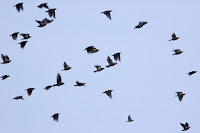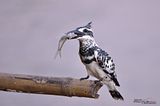Still remember the Whimbrels from this post and the Kentish Plover and juvenile Grey-tailed Tattler from this post? Now they're back again in video format. I don't have the same video editing program that I used while I was in Thailand, which was the Cyberlink Power Director. It's a great program but like other great programs, it's not free. I didn't want to buy it again, so I just didn't do any more editing until I found that YouTube has quite a nice video editing function. All the contrast, brightness and stabilising were done by the YouTube video editor. It's very easy and the result looks satisfying. Now I don't have to bother looking for any other video editing software. Don't forget to select 1080p for full HD viewing!
Whimbrel (Numenius phaeopus variegatus)
Kentish Plover (Charadrius alexandrinus nihonensis)
This one was shot handheld but the stabiliser in YouTube video editor did a great job.
This one was shot handheld but the stabiliser in YouTube video editor did a great job.
Juvenile Grey-tailed Tattler (Tringa brevipes)
























































